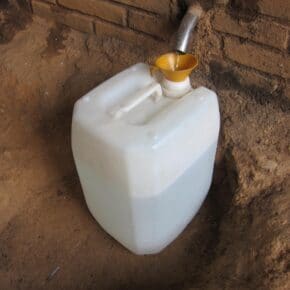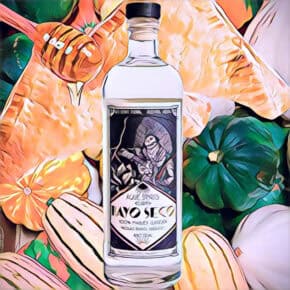By now hopefully we’re all clear that mezcal is most definitely not tequila’s ‘smoky cousin’ (cringe). So what exactly are the differences and similarities between Mexico’s most popular agave spirits? Here we get into the basics of what makes each category unique as well as where they overlap. In addition to being well informed, knowing the differences may also help you choose which spirit will best suit your tastes and/or occasion.
The Common Ground
For starters, both spirits are agave spirits from Mexico. Mezcal actually predates tequila as we know it, making the tequila we know and love today a descendant of traditional and ancestral mezcal. The word ‘mezcal’ was the original word used to describe spirits derived from distilled cooked agave ferment, and tequila was initially differentiated by where it came from and for its particularly good quality. For example, the town of Tequila was famous for its mezcal, called ‘Vino de Mezcal de Tequila’ or ‘Agave Wine from Tequila’ in the first written records a few centuries ago. I like to think of it like squares and rectangles: not all rectangles are squares, but all squares are rectangles; similarly, not all mezcal is tequila, but all tequila is mezcal- historically speaking. Since then, Tequila the beverage has grown exponentially and evolved into a billion dollar international industry, eclipsing the popularity of its mother spirit for the better part of the last century.
The chemical process to go from agave in the field to spirit in the glass is also similar at a base level. From a macro point of view, both tequila and mezcal cook agave to turn starch into fermentable sugars, ferment the cooked agave, then distill it twice. There are key production differences on a micro that we’ll explore later.
Both spirits also have their own Denominations of Origin, a set of geographical and production rules and regulations that are required to use the terms ‘Tequila’ and ‘Mezcal’ respectively. Theoretically the DO’s protect the culture and heritage of the spirits, similar to other DOs for Champagne and Parmesan cheese, for example.
Where this gets tricky is the word mezcal can be used historically- meaning agave spirits from Mexico, of which there are many sub-varieties with their own regional names; and the word mezcal can also be used in the legal sense, which refers to the DO registered and protected spirits. With a firm understanding that mezcal is the historical umbrella category that encompasses all cooked agave spirits from Mexico, we can turn our focus to the differences between the legally protected beverages: Tequila & Mezcal.
The Distinctions
Provenance
The biggest and most significant difference is the options in each category. Tequila is made from one agave variety of one species, almost exclusively from one general region of Mexico- in and around the town of Tequila. Mezcal can be made from many species of agave, about 40- each of which have subvarieties, and both historically and legally come from all over Mexico. The vast possibilities for mezcal, with the varieties of agave, soil types and climates of different regions, along with the customs and traditions of distinct regions, means that mezcal has exponentially more variety than tequila.
Production
While the chemistry basics of production are the same, the way in which they are produced also vary greatly and heavily influence characteristic flavor profiles we have come to associate with each spirit. The distinctions start from the germination or propagation of the plants themselves. All Tequila is made from the Tequilana Blue Weber agave, and the vast majority of the plants are clones, reproduced by rhizomes also known as hijuelos. Most of what is in the ground now are clones of clones of clones of clones, etc. While other varieties used to make Mezcal also reproduce this way and clones are very popular, we see way more sexual reproduction and biodiversity among agaves that are destined to be Mezcal versus Tequila. In fact, this is a deliberate focus for many artisanal producers and agave growers in Mezcal regions.
This distinction can also be appreciated when looking at how the plants grow. In Tequila, all plants are cultivated, typically in neat rows in large plantations. Plantations of Mezcal-destined agaves also exist all over Mexico, but there is also semi-wild cultivation which places agaves in their natural wild habitat to mature; as well as wild agaves that are harvested as they become ripe. Harvesting neat rows of agaves is a lot easier than harvesting them one by one from a steep mountainside.
The biggest production difference is the cooking method. Tequila typically steams the agaves, either in masonry ovens or autoclaves which are basically pressure cookers. There are of course some exceptions where the agave is cooked in masonry ovens which are fueled by gas which imparts a more roast flavor. Mezcal is almost always cooked in the ancestral way- in a conical pit in the ground that is heated with red hot stones from a wood fire, with the agave hearts layered in, covered with earth, and left for 4-ish days. This step in the process is what gives many mezcals their characteristic smokiness.
Another key element that may vary between Tequila and Mezcal is the inclusion of the fibers in fermentation. In Tequila, it is common to ferment only the liquid that is pressed from the cooked agaves, though some producers do include the fibers. For Mezcal, the fibers are almost always included in fermentation and the first distillation. Additionally, fermentation for Mezcal is done with wild ambient yeasts, whereas for Tequila, it is common to inoculate or kill off wild ambient yeasts, and add a specific strain of yeast for better control over fermentation.
See the Mezcal 101 page for complete details, photos and videos of the production process for mezcal.
Wood Aging & Philosophy
Tequila is not a niche spirit the same way Mezcal is. Mezcal often prioritizes the plant, and is very batch specific, and usually those batches are small. Because artisanal Mezcal seeks to highlight the distilled essence of the plants in a small batch, it is common for each release to vary in alcohol content and flavor. Most Tequilas, on the other hand, are more commercial products, even many of the artisanally made ones, and consistency from batch to batch is prioritized.
For mezcal producers who seek to bottle the pure flavor of the plants, which can take upwards of 25 years to mature, the last thing they want to do is obscure or alter the flavor by aging in wood. Of course there are some aged Mezcals, and some very good ones at that, but the traditionally speaking Mezcals will never be rested in wood- only in glass or clay. Tequila, on the other hand, followed the playbook of whiskey, where the more aged a spirit is, the more expensive it is, and oftentimes is considered higher quality.
Industrialization
Both Tequila and Mezcal industries are just that- industrialized businesses. While we are quick to over romanticize Mezcal and think of it as exclusively a rustic and small operation, there are plenty of massive brands that operate in huge warehouses. That said, there is more craft small production in the world of Mezcal than there is in Tequila- and the standards of what is considered craft and small production are distinct in each category. For example, a large semi-industrialized Mezcal operation still looks like a small or medium craft operation when compared to an industrial Tequila operation. It is not as simple as Mezcal = small artisanal and Tequila = big industrial, but it is important to keep in mind that most Tequila operations are exponentially larger than most Mezcal operations. Industrialization also brings a formulaic approach to making spirits- which goes back to the point of Tequila often featuring a consistent profile, while Mezcal is often batch specific, though there are more than a few formulaic consistent Mezcals on the market these days.
The most important differences in the industrialization of both categories are key points in the laws, or NOMs, that govern each. For Tequila, 1% of additives are allowed- things like color and flavor enhancers- they even have artificial ‘agave flavor’ that can be added. These additives do not need to be disclosed anywhere on the bottle or by the brand. Many highly rated Tequilas are actually the result of a chemistry experiment with additives, constructed to suit the current tastes. The technology being used is so effective that it dupes professional tasters into enjoying the fake agave profile flavor over the real thing- kind of like preferring the cheetos over natural snacks because they are chemically designed to bring pleasure to our brains. In addition to the additives, Tequila only has to be made with 51% agave, and the other 49% can be from another base- typically sugar cane spirit. These tequilas are called mixto and will not say 100% agave on their labels. In my book- these are not real tequila.
For Mezcal, additives are allowed, but they must be identified, and typically refer to ingredients included in a final distillation (pechuga), or macerated in the final distillate (abocado con) and are celebrated aspects of those spirits. For Mezcal, the spirit must be made from 100% agave, even in industrialized settings.
In Short
Tequila and Mezcal are definitely related, but distinct. As with everything, there are many exceptions to the generalizations. Being informed about how and why they are different can help you find the flavors you enjoy the most. At the end of the day, the most important thing is to drink what you like.












Leave a Comment